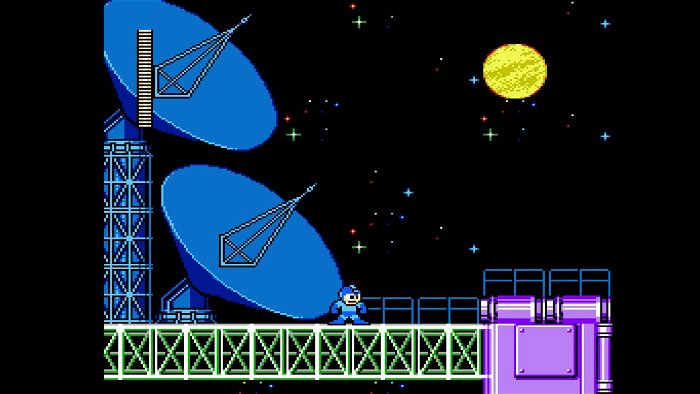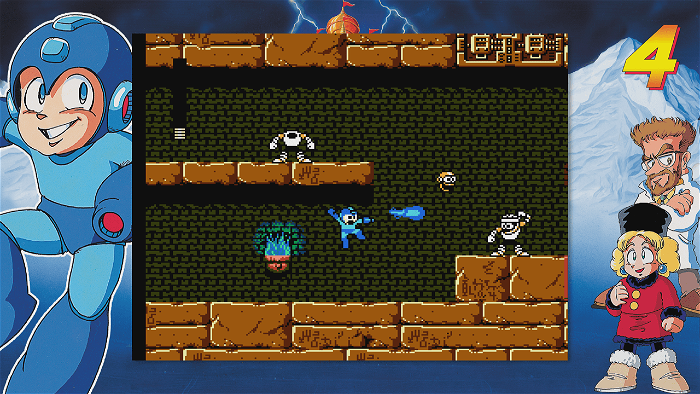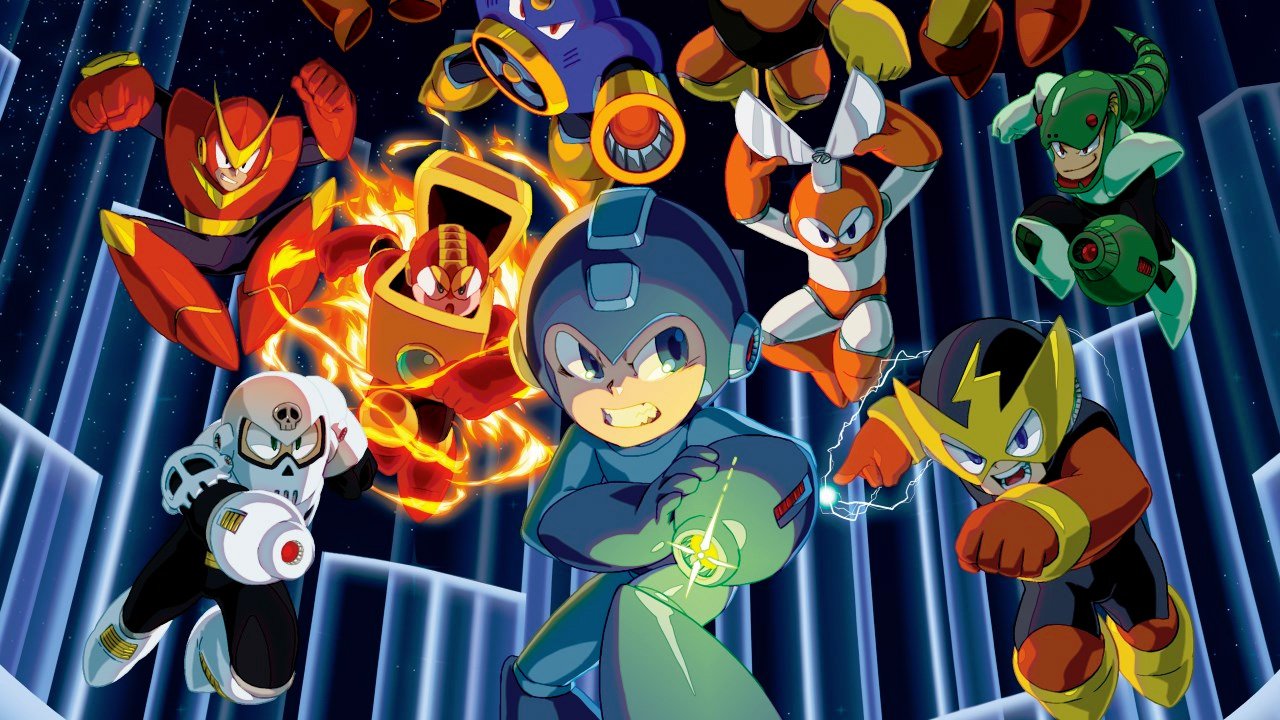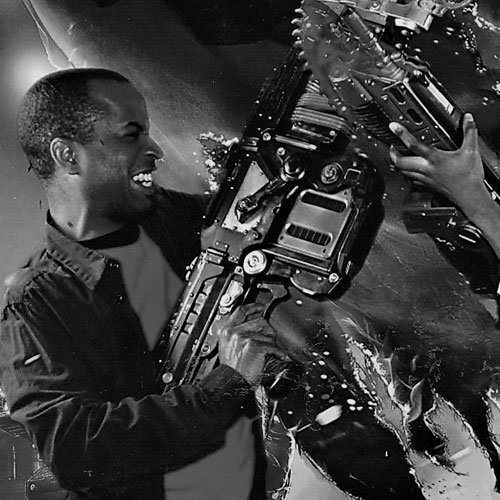Without a doubt, one of my fondest memories of owning a Nintendo Entertainment System in the late 80s was discovering Mega Man 2. The premise was simple but brilliant; a good natured robot must battle and destroy eight evil Robot Masters in order to confront their sinister creator, Dr. Wily, using the signature weapons from each defeated Master to expose and exploit another’s weakness. It was as if Astroboy had been given a license to kill robots instead of befriending them, and had been programmed with a delicious sense of ironic justice. Mega Man 2 was also one of the most colourful NES games of its time, and the platforming/shooter gameplay itself was challenging but never so difficult that you could not eventually overcome its obstacles and bosses with practice or special items. The music for each stage was also phenomenal, collectively forming one of the catchiest and most memorable 8-bit soundtracks of all time—at least in my book. Not to mention how all the robots (even Mega Man himself) looked great when they exploded. All of these qualities earned the game a prized spot in my NES game collection.
Naturally, following that positive experience, I sought out and rented its predecessor, the original Mega Man, as well as its successor, Mega Man 3, and it was with those games that I quickly discovered a previously existing, more dominant school of thought about what Mega Man games were supposed to be. These games were brutally unforgiving, demanding precisely-timed jumps and pattern memorization on the part of the player (for example, try beating MM1’s infamous Yellow Devil boss without using the Start Button trick). They punished players with hard-to-hit respawning enemies if they even dared to edge a step backwards to avoid the bullet barrage of another. They especially liked to do this while the player was precariously running and hopping from one disappearing or moving platform to another, above bottomless voids or deadly spikes (of course). They were also stingier with item drops (e.g. energy pellets, weapon refills, 1-UPs), forcing players to farm respawning enemies for much longer if they wanted to increase their chances of reaching and holding their own against a level boss. Accomplishing such a feat was easily twice to three times as difficult as it was in MM2. Finally, the music, the one element that kept me going when MM2 got rough, simply didn’t hold up in MM1 or any of the later games. I still loved the Blue Bomber, but I couldn’t get by with just challenge and frustration alone.
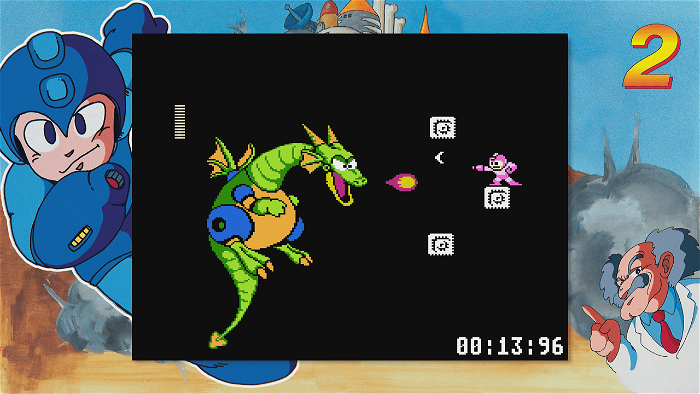
So, when the opportunity came up to revisit all six early Mega Man titles in the Mega Man Legacy Collection, I jumped at the chance, hoping to catch up on what I missed after I’d hung up my blue boots all those years ago. On the bright side, all the included games (Mega Man 1 through 6) have been faithfully reproduced and are exactly as I remember them, including my beloved MM2; however, the experience has also confirmed my worst fear: MM2 was indeed an anomaly in the franchise, rather than the norm. That is to say, players who hope to get the most out of this Mega Man compilation will either need to be in the top 20th percentile of old-school platform players, or will have to “Mega Man-up” quick, as the Legacy Collection will spare them no quarter. Thankfully, modern console conveniences such as the ability to save one’s progress between levels (as opposed to using passwords—though this option has also been faithfully retained), and the Xbox One (and supposedly PS4’s) built-in ability to instant-resume a game from sleep have made the marathon-play sessions a tad less daunting—not to mention easier to jump back into after taking a much needed stress break.
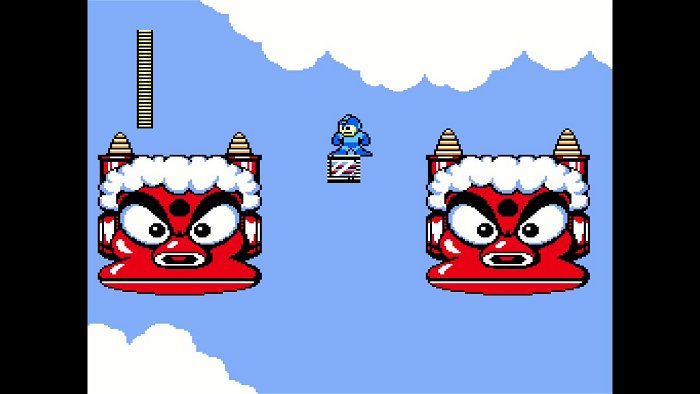
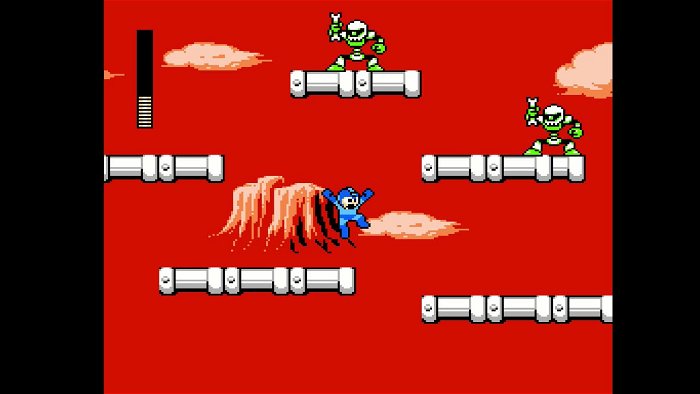
As a mini-anthology, Mega Man Legacy Collection offers up some intriguing extras. Most notably among them, a Museum where fans can browse character designs, artwork, concept work ,and box art, as well as an illustrated Database that provides a description of each character/robot along with suggested strategies and hints on how to defeat that enemy, if applicable. And for those seeking an even greater challenge than what Mega Man 1 through 6 already provide, there is a Challenge Mode that dares players to take on remixed versions of each game or elements thereof, such as special Boss Rush challenges. Naturally, there are time limits to complete these challenges within, and successful completion of a predetermined number of challenges will unlock the next group. This mode will likely appeal to would-be speed-runners and gaming-masochists most of all.
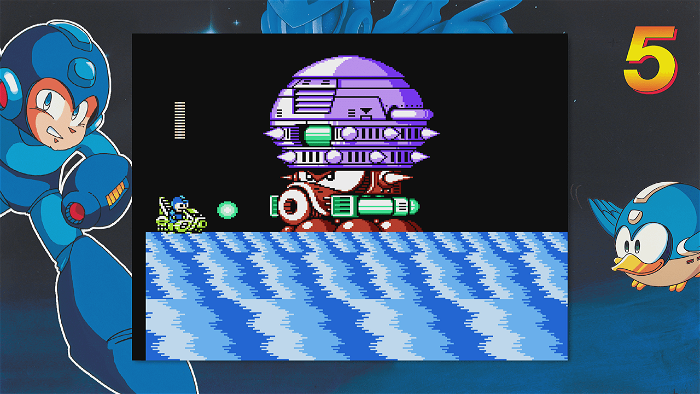
What I find most irritating about this compilation, however, is not the games’ collective level of difficulty, but rather the fact that only Mega Man titles 1-6 are included. The low price ($15) aside, a Mega Man collection that makes use of the word “Legacy” in its title but fails to include all ten of the games in the main Mega Man franchise honestly smacks of laziness in this day and age—especially when it arrives on the heels of Microsoft’s own Rare Replay anthology, which comprised of no less than 30 Rare games spanning over five console generations and families. In an ideal world, a modern Mega Man anthology would have gathered all 31 main titles (excluding handheld versions) from Mega Man, Mega Man X and Mega Man Legends in one $30-40 package, and as with the aforementioned Rare Replay, few would complain about the outstanding value such a collection represented. At the very least, Mega Man 7-10 should have been included in the existing package, and with 2004’s Mega Man Anniversary Collection (PS2, Xbox, Gamecube) managing to gather the first eight games together, there seems to be no reason why this could not have been accomplished, except for publisher Capcom’s disappointing habit of revisiting the “classics re-release well” over and over again for profit.
As a port job, Mega Man Legacy Collection is solid, and Digital Eclipse has done a commendable job of making these NES titles playable on modern hardware, but as a modern collection, it’s woefully incomplete no matter how you slice it.
